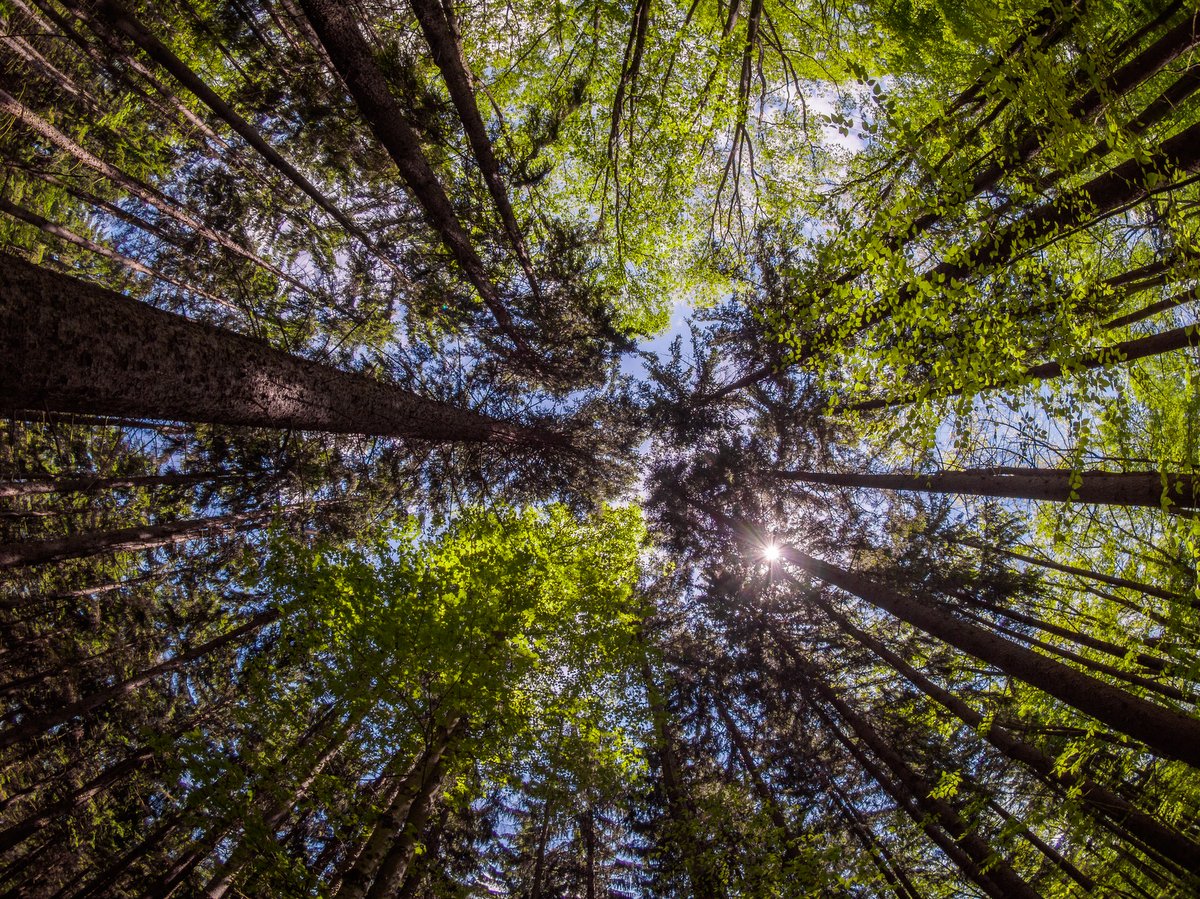We have always heard voices in the whispering of the wind through branches, and we have always imagined that trees are talking to, or about, us. From the dendromancy of the Celts to the bodhi tree under which the Buddha attained enlightenment, we imagine that trees, particularly large and old ones, must have great wisdom. Science and mythology are starting to converge as we are discovering that trees do talk, though unfortunately not about us.
Humans have a very poor sense of smell, and perhaps that’s part of the reason why it took us so long to realize what was happening right beneath our noses. All plants, it turns out, communicate with each other using volatile organic compounds that often smell pleasant to us: botanical essential oils are, quite literally, messages in bottles. We don’t know if trees share news about happy events, but they regularly warn each other about the imminent dangers of pests, herbivores, and drought.
When the Southern Pine Beetle, now widespread in New York State, bores into a conifer, the insect releases aggregation pheromones that attract others of its kind to the feast. In response, the tree releases its own pheromones that both warn other trees of the threat and attract insect predators. The trees that receive this message increase their own production of sap so that invading insects are flushed out of their tunnels. The fresh smell of the woods is, at least in part, the smell of arboreal distress calls. Interestingly, humans intercept these messages without even realizing it: volatile organic compounds also stimulate the human immune system, which is why Japanese doctors prescribe “forest bathing” for their patients.
As esoteric as it may seem, the olfactory tree talk aboveground is still easier for us to understand than the conversations below the forest floor. This chatter takes place through the mycorrhizal network, a vast biological system comprised of the interconnections between the roots of vascular plants (such as trees, ferns, and grasses) and the “roots” or mycelia of certain mushrooms, including boletes, chanterelles, and puffballs. This gossamer lattice, which connects almost everything growing in the forest, has often been compared to the neurons in a brain or the linkages of the internet – some people have even dubbed it the “Wood Wide Web.” It is so extensive that a teaspoon of healthy soil contains miles of fungal filaments, and so delicate that it can be permanently destroyed when the ground is compacted by heavy machinery.
Fungi do not photosynthesize and must absorb nutrients from their surroundings; trees, on the other hand, often need more nutrients than they can absorb by themselves. The mycorrhizal network allows seamless cooperation between the two. Trees send excess sugar to the fungi and the fungi, which easily absorb nutrients through the vast surface area of their mycelia, send water and minerals back to the trees. The mutualism between vascular plants and fungi is not only overwhelmingly common worldwide but absolutely critical to the health of forests: trees that grow in soil that is too damaged to support fungi will wither and die. This partnership is unbelievably ancient; in fact, it might have originally helped plants colonize dry land 400 million years ago.
The mycorrhizal network isn’t just a conduit for nutrients, however. Trees use the fungal crosslinks like subterranean telegraph lines, sending private communications to each other by way of chemical, hormonal, and electrical messages. Struggling saplings send out maydays; in response, large, established “mother” trees share resources with them. If one is suffering from drought or disease, it warns the others so that the forest can prepare itself for the coming fight. These communications move with lightning speed (if we think in terms of tree time): within a few hours, the neighbors have already heard the news.
We often imagine that trees compete with each other for limited resources in the same way that humans do. However, the forest is a progressive place and although trees tend to favor their kin, they also provide help to unrelated trees and even trees of different species. Everything thrives when the forest floor is shaded by a healthy canopy and when pests are under control. The trees, it turns out, still know many things that we do not.


